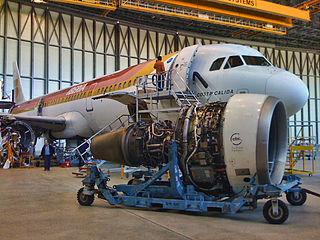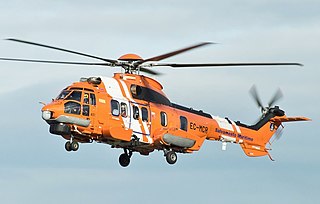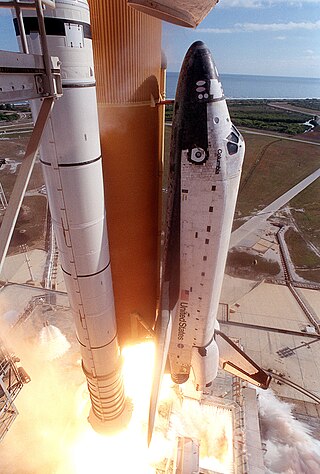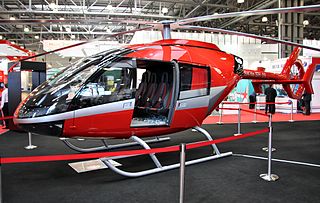Related Research Articles
In reliability engineering, the term availability has the following meanings:

The technical meaning of maintenance involves functional checks, servicing, repairing or replacing of necessary devices, equipment, machinery, building infrastructure, and supporting utilities in industrial, business, and residential installations. Over time, this has come to include multiple wordings that describe various cost-effective practices to keep equipment operational; these activities occur either before or after a failure.

The European Union Aviation Safety Agency (EASA) is an agency of the European Union (EU) with responsibility for civil aviation safety. It carries out certification, regulation and standardisation and also performs investigation and monitoring. It collects and analyses safety data, drafts and advises on safety legislation and co-ordinates with similar organisations in other parts of the world.
Reliability engineering is a sub-discipline of systems engineering that emphasizes the ability of equipment to function without failure. Reliability describes the ability of a system or component to function under stated conditions for a specified period of time. Reliability is closely related to availability, which is typically described as the ability of a component or system to function at a specified moment or interval of time.
Integrated logistic support (ILS) is a technology in the system engineering to lower a product life cycle cost and decrease demand for logistics by the maintenance system optimization to ease the product support. Although originally developed for military purposes, it is also widely used in commercial customer service organisations.

Aircraft maintenance checks are periodic inspections that have to be done on all commercial and civil aircraft after a certain amount of time or usage. Military aircraft normally follow specific maintenance programmes which may, or may not, be similar to those of commercial and civil operators.
A blade inspection method is the practice of monitoring the condition of a blade, such as a helicopter's rotor blade, for deterioration or damage. A common area of focus in the aviation industry has been the detection of cracking, which is commonly associated with fatigue. Automated blade condition monitoring technology has been developed for helicopters and has seen widespread adoption. The technique is routinely mandated by airworthiness authorities for engine inspections. Another commercial sector where such monitoring has become important is electricity generation, particularly on wind farms.

Aircraft maintenance is the performance of tasks required to ensure the continuing airworthiness of an aircraft or aircraft part, including overhaul, inspection, replacement, defect rectification, and the embodiment of modifications, compliance with airworthiness directives and repair.

The Eurocopter EC155 is a long-range medium-lift passenger transport helicopter developed by Eurocopter from its Dauphin family for civil aviation use. It is a twin-engined aircraft and can carry up to 13 passengers along with 1 or 2 crew, depending on customer configuration. The helicopter is marketed for passenger transport, offshore support, VIP corporate transport and casualty transport duties. In 2015, the EC155 was formally renamed to the H155, in line with Eurocopter's corporate rebranding as Airbus Helicopters.

The Airbus Helicopters H225 is a long-range passenger transport helicopter developed by Eurocopter as the next generation of the civilian Super Puma family. It is a twin-engined aircraft and can carry up to 24 passengers along with two crew and a cabin attendant, dependent on customer configuration. The helicopter is marketed for offshore support and VIP passenger transport duties, as well as public service missions.

The Guimbal Cabri G2 is a two-seat light helicopter produced by Hélicoptères Guimbal, and powered by a reciprocating engine. Designed by Bruno Guimbal, a former Eurocopter engineer, it had its origins in the 1980s, and the first demonstrator flew in 1992. Following the granting of regulatory approval, the Cabri entered commercial service in 2008. In addition to its use within the general aviation sector and as a training rotorcraft, the Cabri G2 has also been used as the basis for unmanned aerial vehicles (UAVs).
Flight operational quality assurance also known as flight data monitoring (FDM) or flight data analysis, is a method of capturing, analyzing and/or visualizing the data generated by an aircraft moving through the air from one point to another. Applying the information learned from this analysis helps to find new ways to improve flight safety and increase overall operational efficiency. Several airlines and various national air forces have initiated FOQA programs to collect, store and analyze recorded flight data. The goal is to improve overall aviation safety, increase maintenance effectiveness and reduce operational costs.
The Modification and Replacement Parts Association is the Washington, D.C.-based trade association that represents manufacturers of government-approved after market aircraft parts. These aircraft parts are often known as PMA parts, from the acronym for Parts Manufacturer Approval. The manufacture of PMA parts is regulated in the United States by the Federal Aviation Administration.

Spaceworthiness, or aerospaceworthiness, is a property, or ability of a spacecraft to perform to its design objectives and navigate successfully through both the space environment and the atmosphere as a part of a journey to or from space.

The AgustaWestland AW189 is a twin-engined, super-medium-lift helicopter manufactured by Leonardo S.p.A. It is derived from the AW149, and shares similarities with the AW139 and AW169.
Integrated vehicle health management (IVHM) or integrated system health management (ISHM) is the unified capability of systems to assess the current or future state of the member system health and integrate that picture of system health within a framework of available resources and operational demand.

The Kopter AW09 is the Leonardo Helicopter Division's five-to-eight seat, single-engine multirole helicopter which is currently under development at Kopter’s facilities. It is a clean-sheet design amongst a market sector dominated by decades-old airframe designs.
Urban Air Mobility (UAM) is the use of small, highly automated aircraft to carry passengers or cargo at lower altitudes in urban and suburban areas which have been developed in response to traffic congestion. It usually refers to existing and emerging technologies such as traditional helicopters, vertical-takeoff-and-landing aircraft (VTOL), electrically propelled, vertical-takeoff-and-landing aircraft (eVTOL), and unmanned aerial vehicles (UAVs). These aircraft are characterized by the use of multiple electric-powered rotors or fans for lift and propulsion, along with fly-by-wire systems to control them. Inventors have explored urban air mobility concepts since the early days of powered flight. However, advances in materials, computerized flight controls, batteries and electric motors improved innovation and designs beginning in the late 2010s. Most UAM proponents envision that the aircraft will be owned and operated by professional operators, as with taxis, rather than by private individuals.
Industrial artificial intelligence, or industrial AI, usually refers to the application of artificial intelligence to industry. Unlike general artificial intelligence which is a frontier research discipline to build computerized systems that perform tasks requiring human intelligence, industrial AI is more concerned with the application of such technologies to address industrial pain-points for customer value creation, productivity improvement, cost reduction, site optimization, predictive analysis and insight discovery. Although in a dystopian vision of AI applications, intelligent machines may take away jobs of humans and cause social and ethical issues, industry in general holds a more positive view of AI and sees this transformation of economy unstoppable and expects huge business opportunities in this process.
References
- ↑ "Health and Usage Monitoring Systems". SKYbrary. Retrieved 25 August 2011.
- ↑ "HUMS 2011". Defence Science and Technology Organisation (DSTO). Archived from the original on 15 September 2011. Retrieved 25 August 2011.
- ↑ "EASA HUMS Research Developments". 26 October 2014.
- ↑ "EASA & FAA HUMS / VHM Developments". 7 January 2015.
- ↑ Willis S., 2009, "OLM: A hands on approach". Proceedings of the International Committee on Aeronautical Fatigue, Rotterdam, The Netherlands.
- ↑ "HUMS: Not Just for Heavy Iron Anymore - Helicopter Association International". www.rotor.org. Archived from the original on 2020-09-19.